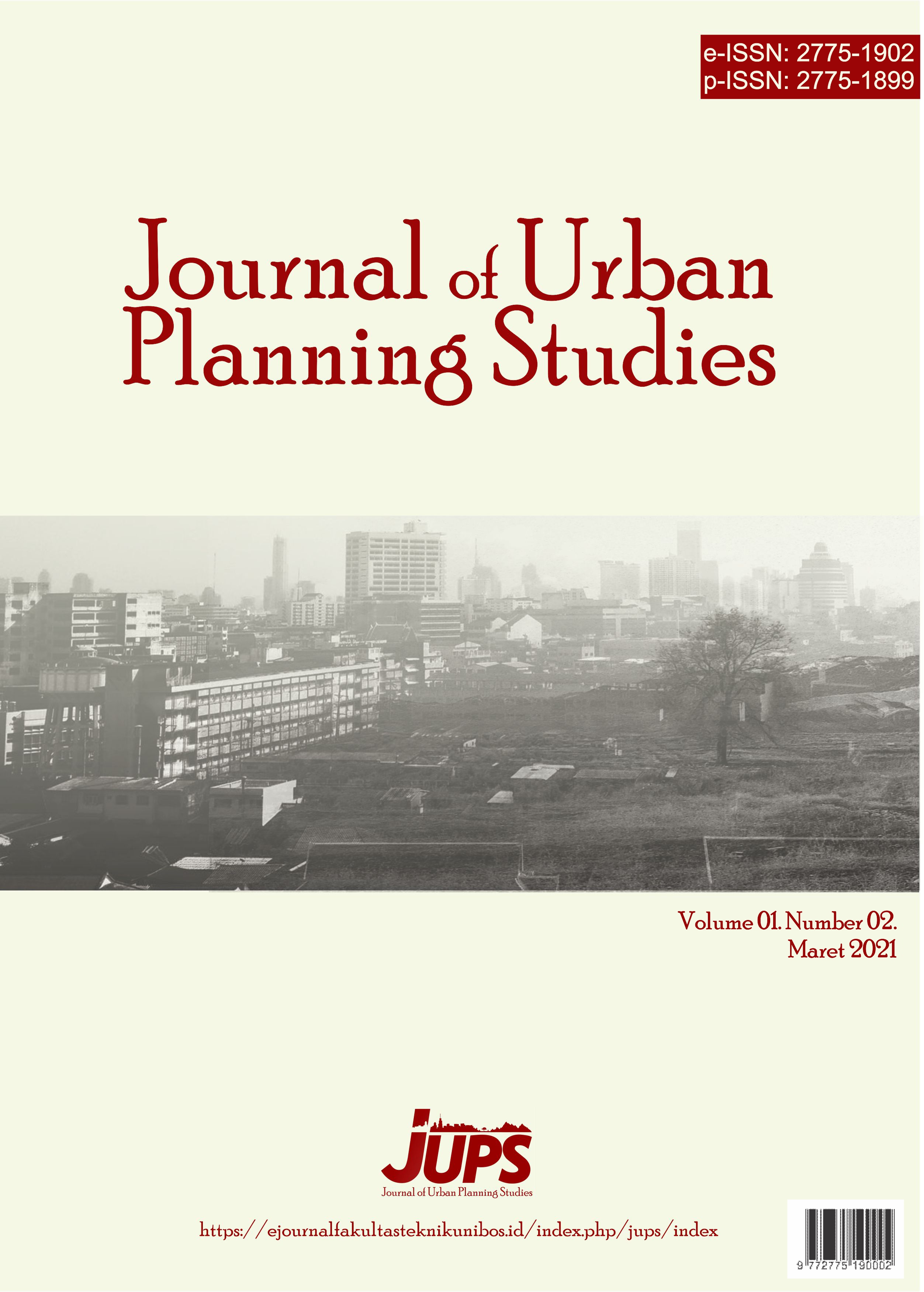Studi Penataan Pedagang Kaki Lima (PKL) di Pantai Manakarra Kota Mamuju Kabupaten Mamuju
DOI:
https://doi.org/10.35965/jups.v1i2.53Kata Kunci:
Arrangement, Street Vendors, Manakarra Beach, Mamuju CItyAbstrak
Abstract. The purpose of this research is to find out how the directions regarding the arrangement of street vendors on Manakarra Beach, Mamuju City. Regency. Mamuju. The variables used consisted of 4, namely: (1) Policy; (2) Education Level; (3) Economic level; (4) Supervision. The analytical method used is in the form of qualitative descriptive analysis and multiple linear analysis.Manakarra Beach is an Artificial Nature Tourism Object in the form of a beach located on Jl. Yos Sudarso, Kel. Rimuku, Kec. Mamuju, Kab. Mamuju, which is the center of Mamuju City. Departing from the description above where the focus of this research is the street vendors (PKL) who are on Manakarra Beach itself. Where the street vendors (PKL) sell on the shoulder of the road and sidewalk, so that there is a need for an effort to organize and supervise so that the street vendor activities do not interfere with the activities and mobility of the population or the community on Jalan Yos Sudarso. In addition, there is also a lack of awareness of tourists on Manakarra Beach towards the surrounding environment, this is evidenced by the presence of food packages and plastic bottles scattered at several points on Mankarra Beach. This of course was also praised by the existence of street vendors on Manakarra Beach itself. So that better structuring and supervision measures are needed.
Abstrak. Tujuan dari penelitian ini adalah untuk mengetahui bagaimana arahan tentang Penataan Pedagang Kaki Lima di Pantai Manakarra, Kota Mamuju. Kab. Mamuju. Variabel yang digunakan terdiri dari 4 yaitu: (1) Kebijakan; (2) Tingkat Pendidikan; (3) tingkat Ekonomi; (4) Pengawasan. Metode analisis yang digunakan berupa analisis dekriptif kualitatif dan analisis linier berganda. Pantai Manakarra Merupakan Objek Wisata Alam Buatan berupa pantai yang terletak di Jl. Yos Sudarso, Kel. Rimuku, Kec. Mamuju, Kab. Mamuju, yang merupakan pusat Kota Mamuju. Berangkat dari uraian diatas dimana yang menjadi fokus penelitian ini yaitu Pedagang Kaki Lima (PKL) yang berada di Pantai Manakarra itu sendiri. Dimana Pedagang Kaki Lima (PKL) tersebut berjualan di bahu jalan dan trotoar, sehingga perlunya bentuk upaya penataan dan pengawasan agar kegiatan PKL tersebut tidak menggangu aktivitas dan mobilitas penduduk atau masyarakat di Jalan Yos Sudarso. Selain itu juga kurangnya kesadaran wisatawan di Pantai Manakarra terhadap lingkungan sekitarnya, hal ini dibuktikan oleh adanya bungkusan makanan serta botol plastik yang berserakan dibeberapa titik di Pantai Mankarra. Hal ini tentunya dipengaruji juga oleh adanya PKL di Pantai Manakarra itu sendiri. Sehingga diperlukan tindakan penataan dan pengawasan yang lebih baik.
Referensi
-, B., & Juariyah, S. (2012). Analisis Kondisi Sosial Ekonomi Dan Tingkat Pendidikan Masyarakat Desa Srigading, Kecamatan Labuhan Maringgai, Kabupaten Lampung Timur. Jurnal Ekonomi Dan Pendidikan, 7(1). Https://Doi.Org/10.21831/Jep.V7i1.577
Muuzi, M., Surya, B., & Aksa, K. (T.T.). Journal Of Urban Planning Studies. 01(01), 20.
Patty, F. N. (T.T.). Dinamika Usaha Pedagang Kaki Lima Di Salatiga. 20.
Rahmawati, H. F. (2007). Peranan Pengawasan Dalam Meningkatkan Kedisiplinan Kerja Pegawai Di Kantor Informasi Dan Komunikasi Kabupaten Karanganyar Tahun 2007. 145.
Sayifullah, S., & Emmalian, E. (2018). Pengaruh Tenaga Kerja Sektor Pertanian Dan Pengeluaran Pemerintah Sektor Pertanian Terhadap Produk Domestik Bruto Sektor Pertanian Di Indonesia. Jurnal Ekonomi-Qu, 8(1). Https://Doi.Org/10.35448/Jequ.V8i1.4962
Tanujaya, C. (T.T.). Perancangan Standart Operational Procedure Produksi Pada Perusahaan Coffeein. 2, 6.
Wafirotin, K. Z., & Marsiwi, D. (2016). Persepsi Keuntungan Menurut Pedagang Kakilima Di Jalan Baru Ponorogo. Ekuilibrium : Jurnal Ilmiah Bidang Ilmu Ekonomi, 10(1), 24. Https://Doi.Org/10.24269/Ekuilibrium.V10i1.46
Widiansyah, S. (T.T.). Dampak Keberadaan Industri Terhadap Perubahan Struktur Sosial Masyarakat (Studi Masyarakat Desa Bojong, Cikupa, Kabupaten Tangerang). 13.
Zein, S., Yasyifa, L., Ghozi, R., Harahap, E., Badruzzaman, F., & Darmawan, D. (2019). Pengolahan Dan Analisis Data Kuantitatif Menggunakan Aplikasi Spss. 4, 7.
##submission.downloads##
Diterbitkan
Cara Mengutip
Terbitan
Bagian
Lisensi
Hak Cipta (c) 2021 Rendi Pratama, Syafri, Rusneni Ruslan

Artikel ini berlisensi Creative Commons Attribution 4.0 International License.













